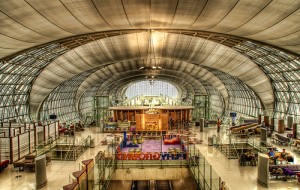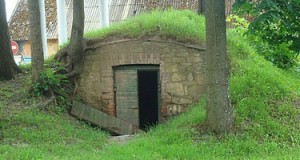How do Nuclear Bunkers Work
Disaster shelters are still big business, but what’s inside a modern nuclear bunker?
There are a number of reasons why a disaster shelter might be built. Along the east coast of the United States and parts of the Asian coastline, they protect people from hurricanes, flooding and typhoons.
In earthquake-prone regions, they shelter people from falling buildings and provide an escape route from surface rubble when all is clear. And typically across the Great Plains of the US, simple but sturdy shelters offer a safe subterranean retreat from tornadoes wreaking havoc on the surface.
Nuclear bunkers are the most robust of these shelters. They’re designed to provide comprehensive safety from anything nature or man can throw at them, plus life support for many months – and even years for the most sophisticated examples. Smaller varieties tend to come pre-assembled, but larger and bespoke shelters are usually installed on site.
The modern shape is a corrugated curve, made of fibreglass and composite, fire retardant and even bulletproof (for the entrance) materials. They’re designed to avoid tensile loads, while seismic joints can withstand the kind of forces an 8.5-magnitude earthquake might yield.
 Modern nuclear bunkers are sealed to prevent contamination from nuclear fallout and also to keep deadly radon gas and airborne toxins out, including weaponised viruses and bacteria. In addition, an ‘overpressure choking’ system with no moving parts prevents a nearby blast from causing excessive pressure inside the shelter.
Modern nuclear bunkers are sealed to prevent contamination from nuclear fallout and also to keep deadly radon gas and airborne toxins out, including weaponised viruses and bacteria. In addition, an ‘overpressure choking’ system with no moving parts prevents a nearby blast from causing excessive pressure inside the shelter.
New nuclear bunkers are still a profitable business today despite the decades that have passed since the Cold War ended. While they are a fascinating feature for any household to have, we can only hope that no one ever has to use them for their intended purpose.
A sheltered life
Surviving the initial blast, the terrible heat and deadly radiation from a nuclear explosion is one thing, but the radioactive fallout alone can be enough to stop you from venturing outside for weeks. Basic accommodation in a good nuclear bunker will include a plumbing system with a ceramic water filter and high-pressure pump to keep drinking water clean and pass ‘grey water’ on for storage and potential recycling.
 A longer-term bunker might include a hydroponics bay in which the grey water can be used to irrigate plants. Bunk beds come as standard and a well-stocked shelter will include dried, preserved goods, tinned food and other non-perishables that will last for an extended stay. Crucially important is some form of power generator as well as a battery backup, plus shielding for essential electronics like radios in the event of an electromagnetic pulse that can destroy sensitive equipment.
A longer-term bunker might include a hydroponics bay in which the grey water can be used to irrigate plants. Bunk beds come as standard and a well-stocked shelter will include dried, preserved goods, tinned food and other non-perishables that will last for an extended stay. Crucially important is some form of power generator as well as a battery backup, plus shielding for essential electronics like radios in the event of an electromagnetic pulse that can destroy sensitive equipment.
Escaping the effects of nuclear radiation
 Depth underground is important for nuclear shelters as the covering of earth is the main means of mitigating radiation levels. Standard depth for new bunkers is just over 2.5 metres (8.5 feet), designed to reduce an overhead burst of deadly radiation from a one-megaton bomb to less than the effect of a single chest X-ray (0.01 sieverts) – which is harmless.
Depth underground is important for nuclear shelters as the covering of earth is the main means of mitigating radiation levels. Standard depth for new bunkers is just over 2.5 metres (8.5 feet), designed to reduce an overhead burst of deadly radiation from a one-megaton bomb to less than the effect of a single chest X-ray (0.01 sieverts) – which is harmless.
The sievert is used to measure the biological effects of radiation. From the gamma and neutron sources that characterize the deadliest parts of a nuclear blast’s radiation burst, a person in good health can be exposed to a dose of up to 0.25 sieverts and suffer no ill-effects.
Curiously, a smaller 500-kiloton nuclear bomb exploding in the air can be more lethal than a much larger weapon on the ground. This is because nuclear air bursts produce much more deadly neutron radiation than surface bursts.

